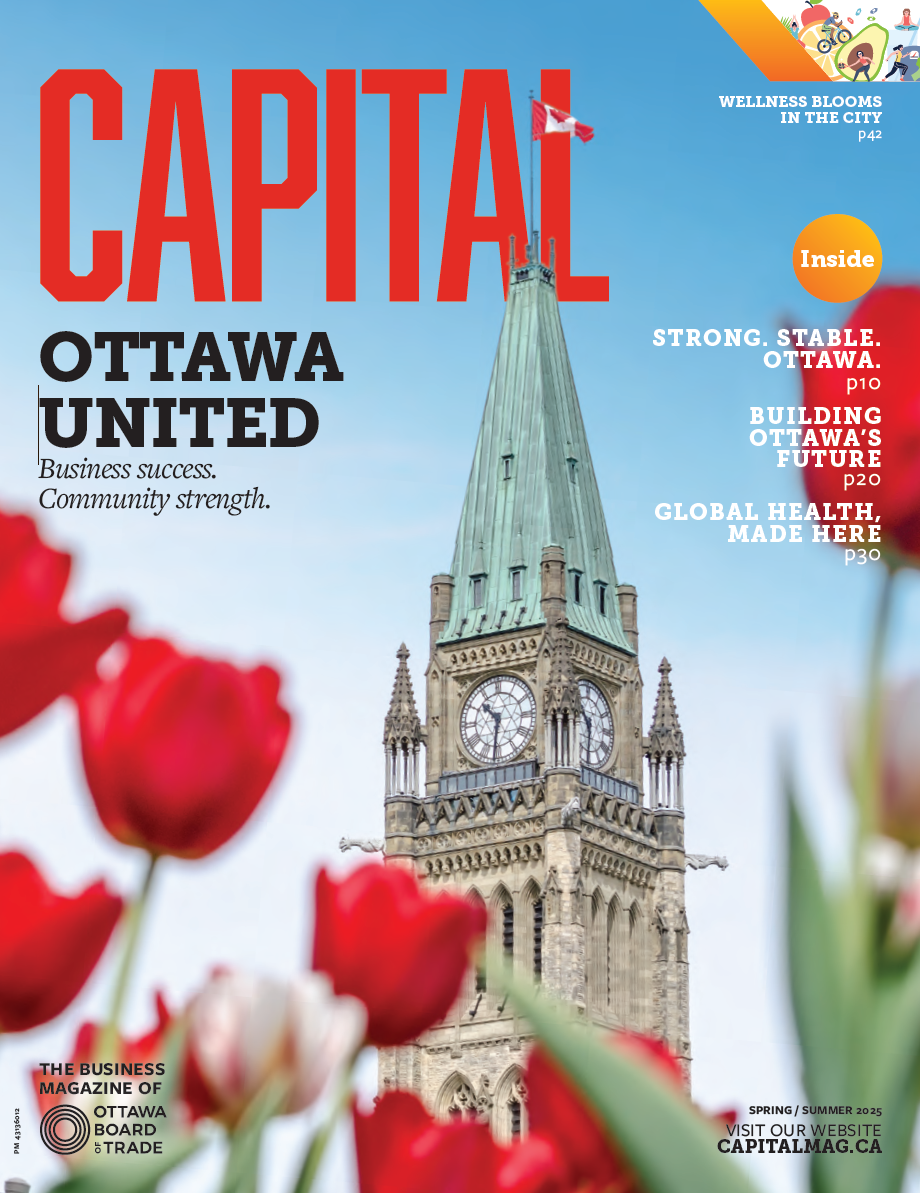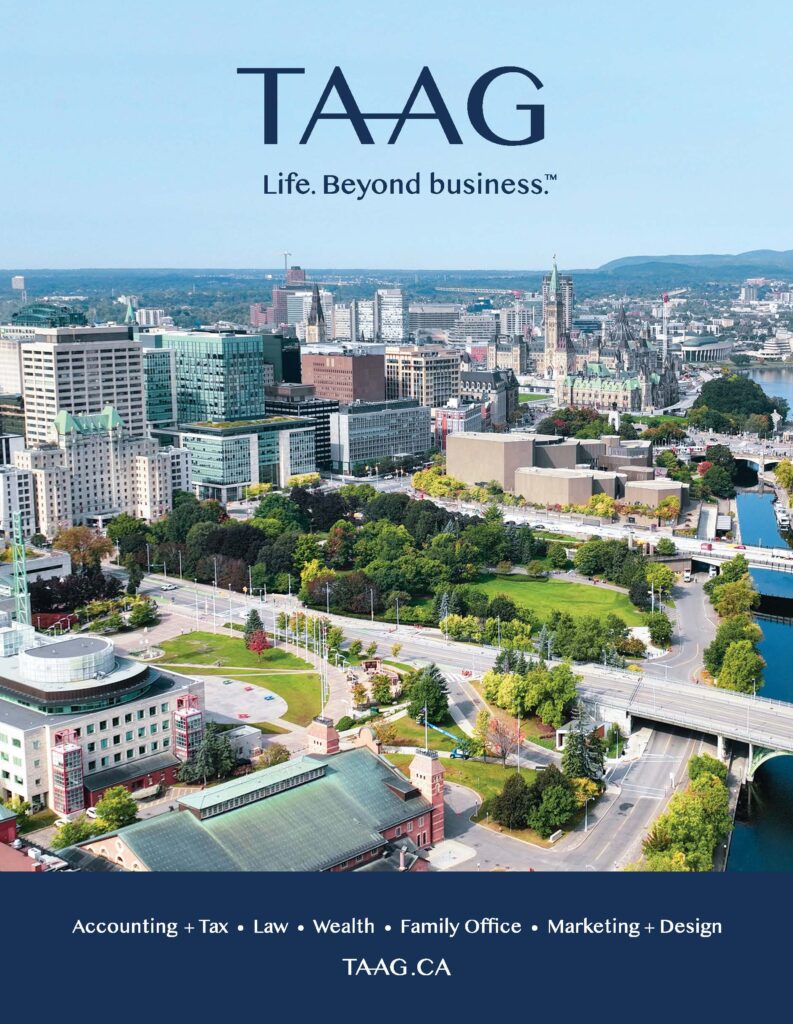Ottawa is getting a makeover, but will the ByWard Market keep its sense of style?
By Barbara Balfour
Between investments in public transportation, the redevelopment of commercial spaces, and the renewal of cultural landmarks, there’s no question that for Ottawa, 2017 is the year of the facelift. But one of the city’s largest tourist attractions is facing a critical junction, as stakeholders question whether the ByWard Market revitalization is doing enough to keep the historic market competitive, especially as other Ottawa neighbourhoods gain traction.
“This is the heart and soul of the city,” says Andre Schad, who owns the stylish Schad boutique on Sussex Drive; he’s also a partner in the swanky Moscow Tea Room. Schad is enthusiastic about the area’s history, museums, and its wealth of upscale galleries, restaurants, and retail. But he worries that the market isn’t getting the attention it needs. And Schad says that while he’s “a big believer in the great world-class events we’re hosting in 2017,” he was disappointed that nothing was planned in the market for the Winterlude festival—one of Ottawa’s signature events.
And Schad doesn’t mince his words about who’s responsible.
“For the last 20 years, the market has been mismanaged, underfunded, and neglected by the city,” he says. Aside from its huge draw as a trendy place to visit, the area also “produces $1.3 million in parking revenue every year—and we don’t see any of it, not even a dollar for Christmas lights.”
Schad, who sits on the ByWard Market Business Improvement Association, also says the market needs a greater diversity of merchants. “There were 17 retailers on Clarence Street at one point, but now there are 17 restaurants,” he says.” Too many restaurants in the market means that the balance is gone and the lunch business is divided between hundreds of establishments.”
Shannon Kenney, the City of Ottawa’s program manager for licensing, markets, and events, says that some changes are being made. The revitalization plan involves creating a public seating space in front of the main Market Square building. “Right now, there’s nowhere to sit if you buy a snack,” says Kenney. The construction— complete with greenery, benches, and a landmark heritage clock—should be completed before the market season starts in the spring.
The city has also created a new governance model for market vendors: Instead of being managed by the city, in the future they’ll be managed by a stand-alone corporation that’s at arm’s length.
“Right now, the market is so highly regulated that it’s difficult to do pilot projects, or measure the success of initiatives,” Kenney says. But the corporation will be free of that bureaucracy, which will “allow them to try new things. We’re hoping this new model will help create more synergies.”
One aspect of the revitalization that has some vendors worried is a proposed shuffle of booths, storefronts, and spaces in the market building. Henri Groulx, president of the ByWard Market Standholders Association, says that the plan to physically relocate some sellers has made many apprehensive about how the move will affect their bottom lines.
For instance, some merchants who used to sell from the coveted spots at the front of the building are being moved to new quarters. “People on William Street might lose their corner spot, which is better for fitting more tables,” says Groulx, who is also a casual vendor, and co-owner of the “hippie-chic” store Funk Your Junk on Parent Street.
“For many vendors, this is their livelihood—some have been doing it for 40 years,” he points out. “Losing their spot would be comparable to losing a job.” Trying to look on the bright side, he adds: “This could be a good thing, because more of the vendors will be spread out. But we won’t know until next year.”
Most people agree, though, that the critical thing is to keep the spirit of the ByWard Market alive. Kenney points out that one aspect of the revitalization is to create a destination for locals— not just for tourists getting dropped off by a bus.
And in fact, locals are the people best placed to know that the market vibe can’t be found anywhere else in the city. “We’re here because of the diversity and energy,” says Trefor Munn-Venn, co-leader of Rhapsody Strategies, a business coaching and consultation company located above Zak’s Diner, half a block north of the market building. “Any time of day or night you can look out the window and see photo shoots, Wookies and Jedis promoting events, and major politicians passing through.”
That kind of energy, Munn-Venn believes, “is very important for us and our clients.” And he’s optimistic about the positive effect the new Light Rail Transit system will have when it’s able to bring visitors downtown in 2018. “When you simplify people’s transportation habits and give them easier options, they make different choices,” he says. “That easy access will be a real benefit to this area.”
Barbara Balfour is a freelance journalist,
TV host, and producer based in Ottawa.
Capital
Subscribe to Capital
-
CAPITAL is both a print and digital publication of the Ottawa Board of Trade and is co-published twice a year in partnership with TAAG.
CAPITAL is designed to tell the story of Ottawa, our nation’s capital city with a thriving business community and culture scene. It highlights our opportunities and strengths, our future focused plans and the businesses and leaders that are working together to make it happen.
CAPITAL inspires the local community to become ambassadors and promote what we have to offer. And it is a great way to attract people to our city – to live, work, play and to learn, visit and invest.
We are seeking local businesses and organizations to be sponsors – to use this platform to support our local economic ecosystem, build their brand, promote their business, highlight their team, and demonstrate their commitment to our amazing city. You can do this through traditional advertising or sponsored content.
To explore options and see our Media Kit, please contact: SPigeon@taag.ca.
OTTAWA BOARD OF TRADE
President & CEO
Sueling Ching
www.ottawabot.caTAAG
7th Floor, 251 Bank Street
Ottawa, Ontario K2P 5M3
Phone: 613-234-8468
reception@taag.caCAPITAL is grateful for some funding contributed by the Canada Periodical Fund, Special Measures for Journalism, Department of Canadian Heritage.

-
Photo Galleries
Click below to view photos from our recent events.





















